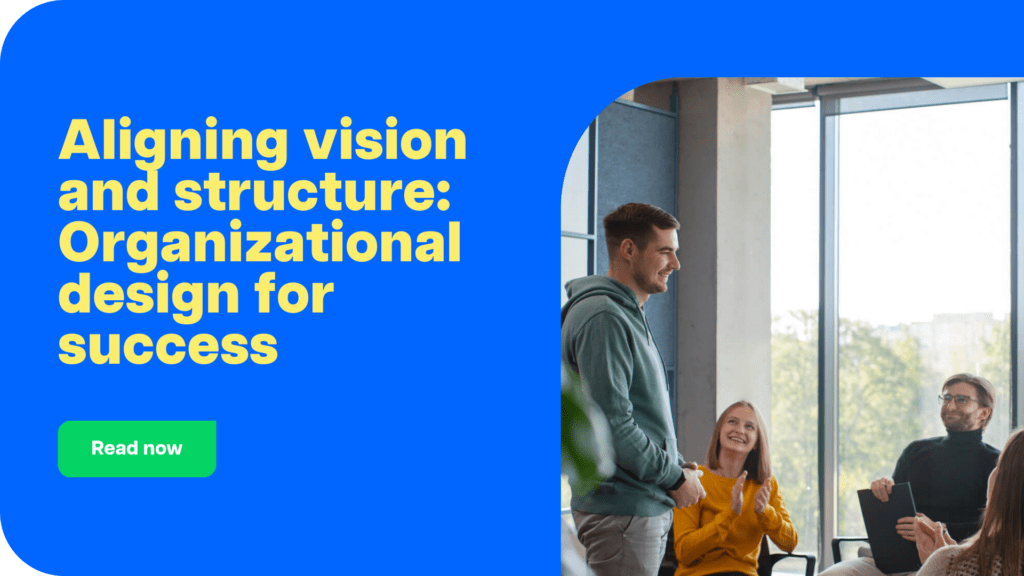The only thing consistent in today’s quickly changing corporate environment is change. Businesses that can successfully navigate these choppy waters by encouraging creativity and creating adaptable designs are the ones that succeed. This blog article explores the fundamentals of adaptable organizational design, its importance, and practical implementation strategies for promoting creativity and preserving a competitive advantage.
Table of Contents
- Comprehending an adaptable organizational design
- The imperative for adaptability
- Principles of adaptable organizational design
- Implementing adaptable organizational design
- Overcoming obstacles
Comprehending an adaptable organizational design
An adaptive organizational design strategy enables companies to stay creative, adaptable, and flexible in the face of change. It shifts from conventional hierarchical structures to more flexible and dynamic models. By enabling businesses to react swiftly to shifts in the market, in technology, and in their customers’ needs, this design promotes a constant innovation culture.
The imperative for adaptability
Rapid technological breakthroughs and the digital revolution have reduced product lifecycles and changed consumer behavior. Once-dominant businesses are struggling to stay up with increasingly inventive and nimble startups. The takeaway is unmistakable: flexibility is not only a tactical benefit but also a must for survival.

Principles of adaptable organizational design
Dispersion
A key component of adaptable design is decentralization, which transfers decision-making authority to staff members at lower levels. This empowerment fosters a proactive attitude to innovation, improves adaptability, and expedites decision-making processes.
Openness
An organization needs to embrace transparency in order to be really adaptable. Clear lines of communication guarantee that information is shared openly at all levels, allowing for prompt corrections and promoting a climate of trust and cooperation.
Ongoing education
Continuous learning occurs in a flexible organization. Workers are encouraged to try new things, learn new skills, and take chances. In addition to encouraging creativity, this environment aids in luring and keeping talent ready to advance and take on new challenges.
Inclusion and diversity
Diverse teams foster creativity and innovation because they bring a wealth of perspectives to the table. An adaptable organizational design actively encourages inclusion and diversity, guaranteeing that a variety of viewpoints and solutions are considered and implemented.

Implementing adaptable organizational design
Evaluation and strategy development
The first step toward adapting is analyzing the current organizational structure in depth. Determine bottlenecks and stiffness regions. Create a plan that aligns with your goal of having an adaptable and responsive company.
Modifications in structure
Consider changing to a matrix or flatter organizational structure. By removing layers of management, these arrangements promote improved communication and speedier decision-making.
Enhancements to the process
Simplify procedures to eliminate pointless red tape. Use agile approaches that emphasize frequent feedback loops, quick iterations, and close teamwork.
Tools and technology
Make use of technology to help your flexible design. Collaborative workplaces, real-time communication tools, and project management software can promote adaptability and creativity.
Overcoming obstacles
Adopting an adaptable organizational structure is not without its difficulties. It is normal to be resistant to change. To overcome this, cultivate a robust culture of trust, make the benefits obvious, and involve staff members in the changeover process. It’s critical to strike the ideal mix between control and flexibility. While too much control can impede innovation, too much liberty can also cause chaos.
Conclusion
In today’s fast-paced business climate, developing an adaptable organizational design is essential to promoting innovation and maintaining competitiveness. Organizations can increase their adaptability and responsiveness to change by embracing diversity, decentralizing decision-making, fostering transparency, and fostering continuous learning.
Putting such a concept into practice calls for a calculated strategy, a willingness to adapt, and an openness to new tools and techniques. While the path may be difficult, the benefits—such as enhanced agility, better creativity, and ongoing competitiveness—make the effort worthwhile. Let’s make flexibility our guiding principle and turn obstacles into chances for development and creativity.

Andy is a technology & marketing leader who has delivered award-winning and world-first experiences.


